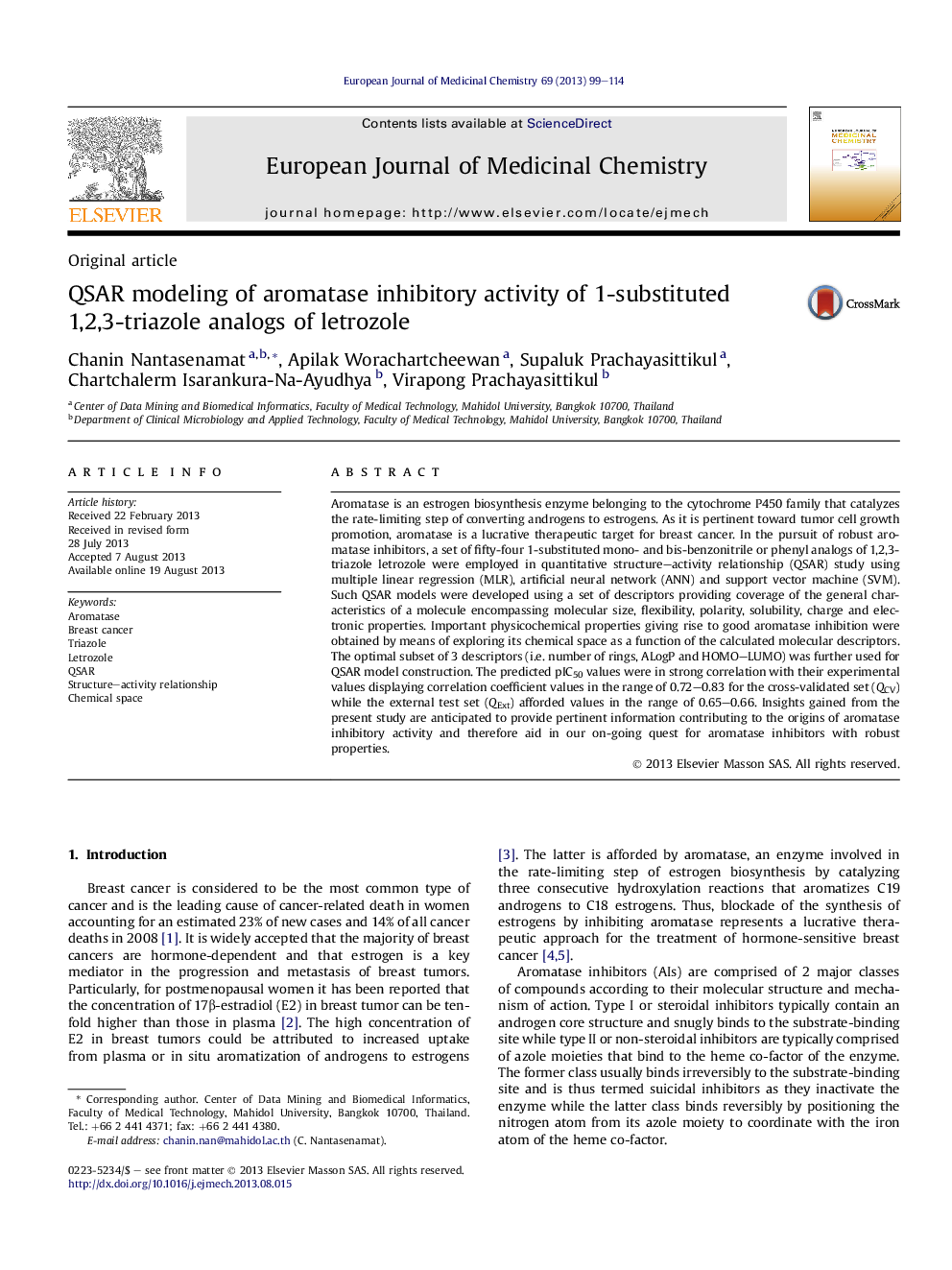| کد مقاله | کد نشریه | سال انتشار | مقاله انگلیسی | نسخه تمام متن |
|---|---|---|---|---|
| 1398988 | 1501147 | 2013 | 16 صفحه PDF | دانلود رایگان |

• Computational investigation of a series of 1,2,3-triazole analogs of letrozole was carried out.
• Chemical space exploration and QSAR modeling provided insights into the origins of aromatase inhibitory activity.
• Molecular and quantum chemical descriptors provided pertinent insights into their structural features.
• Highly predictive models were obtained from support vector machine.
• Insights on structure–activity relationships were deduced from multiple linear regression equations.
Aromatase is an estrogen biosynthesis enzyme belonging to the cytochrome P450 family that catalyzes the rate-limiting step of converting androgens to estrogens. As it is pertinent toward tumor cell growth promotion, aromatase is a lucrative therapeutic target for breast cancer. In the pursuit of robust aromatase inhibitors, a set of fifty-four 1-substituted mono- and bis-benzonitrile or phenyl analogs of 1,2,3-triazole letrozole were employed in quantitative structure–activity relationship (QSAR) study using multiple linear regression (MLR), artificial neural network (ANN) and support vector machine (SVM). Such QSAR models were developed using a set of descriptors providing coverage of the general characteristics of a molecule encompassing molecular size, flexibility, polarity, solubility, charge and electronic properties. Important physicochemical properties giving rise to good aromatase inhibition were obtained by means of exploring its chemical space as a function of the calculated molecular descriptors. The optimal subset of 3 descriptors (i.e. number of rings, ALogP and HOMO–LUMO) was further used for QSAR model construction. The predicted pIC50 values were in strong correlation with their experimental values displaying correlation coefficient values in the range of 0.72–0.83 for the cross-validated set (QCV) while the external test set (QExt) afforded values in the range of 0.65–0.66. Insights gained from the present study are anticipated to provide pertinent information contributing to the origins of aromatase inhibitory activity and therefore aid in our on-going quest for aromatase inhibitors with robust properties.
Figure optionsDownload as PowerPoint slide
Journal: European Journal of Medicinal Chemistry - Volume 69, November 2013, Pages 99–114